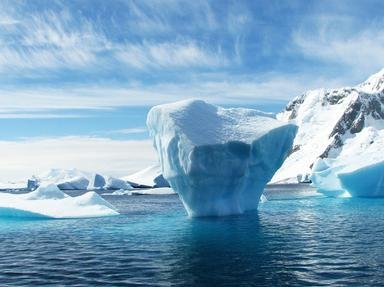Quiz Answer Key and Fun Facts
1. The northernmost permanently inhabited place in the world is located in Canada on the northeastern tip of Ellesmere Island. Which of these cities has been the subject of a book named "Death and Deliverance: The True Story of an Airplane Crash at the North Pole" and a movie called "Ordeal in the Arctic" due to a plane crash in 1991 that resulted in the death of the pilot and four others among the remaining 17 passengers?
2. Meaning 'north' in the Danish language, what is the name of the northernmost permanently inhabited settlement in Greenland?
3. The second-northernmost permanent research facility in the world was founded in 1947 as part of a network of Arctic weather stations. Which Ellesmere Island settlement has the least precipitation and lower average annual temperature than any other weather station in Canada?
4. Which of the following northern settlements, located above 60 degrees, was considered to be a terra nullius or 'No Man's Land' right up to the 20th century since none of the claimants to the land settled there permanently?
5. Though the region of Qaanaaq in Greenland has had inhabitants since 2000 BC, when the Paleo Eskimos discovered the area while migrating from the Arctic Canadian territory towards the east, a proper town was established only in the early 1950s. Which world event forced the population of the town to move 100 kilometers further north in 1953?
6. Grise Fiord, located on Ellesmere Island in Nunavut, Canada, is considered to be the northernmost civilian settlement of the country. While the native name of the area 'Aujuittuq' means 'the place that never thaws', after which mammal did Norwegian explorer Otto Sverdrup name it Grise Fiord meaning 'pig's inlet'?
7. This northernmost city in the United States was a boom town created by the oil industry, located only 1,300 miles from the north pole. Tourism is a strong industry in this land of the midnight sun, despite the fact that there are no paved roads and the only way to access the settlement is via air.
8. Which Norwegian Arctic Circle town's name means "anchorage" from the word for a large number of rocks (good for mooring) and the word for "fastening"?
9. Which Alaskan town within the Arctic Circle is a "dry town", where no alcoholic beverages are sold or served in the few local establishments?
10. This polar region city was originally founded as a fishing village on the island of Vadsoya, but later moved to the mainland. It has always been populated by citizens from Finland, Norway, Russia and Sweden, and is still a cultural melting pot today. Which city is it?
Source: Author
zorba_scank
This quiz was reviewed by FunTrivia editor
spanishliz before going online.
Any errors found in FunTrivia content are routinely corrected through our feedback system.

